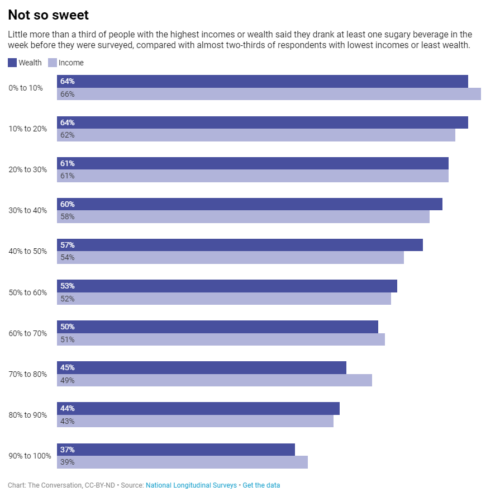Income and sugary beverage consumption
A recent study confirms what we already knew: poorer people drink more sugary beverages than richer people.
This analysis suggests the richest 10% of families drink about 2.5 fewer sugary drinks a week than those in the poorest 10%.
These investigators found this relationship to hold up “even after taking into account things like education, race, gender, cognitive abilities and interest in nutrition.”
Drinking sugary beverages correlates with all those factors as well as with poor diets in general, overweight, the diseases for which overweight is a risk factor, and overall mortality.
I discuss the evidence for all that in my book, Soda Politics: Taking on Big Soda (and Winning).



